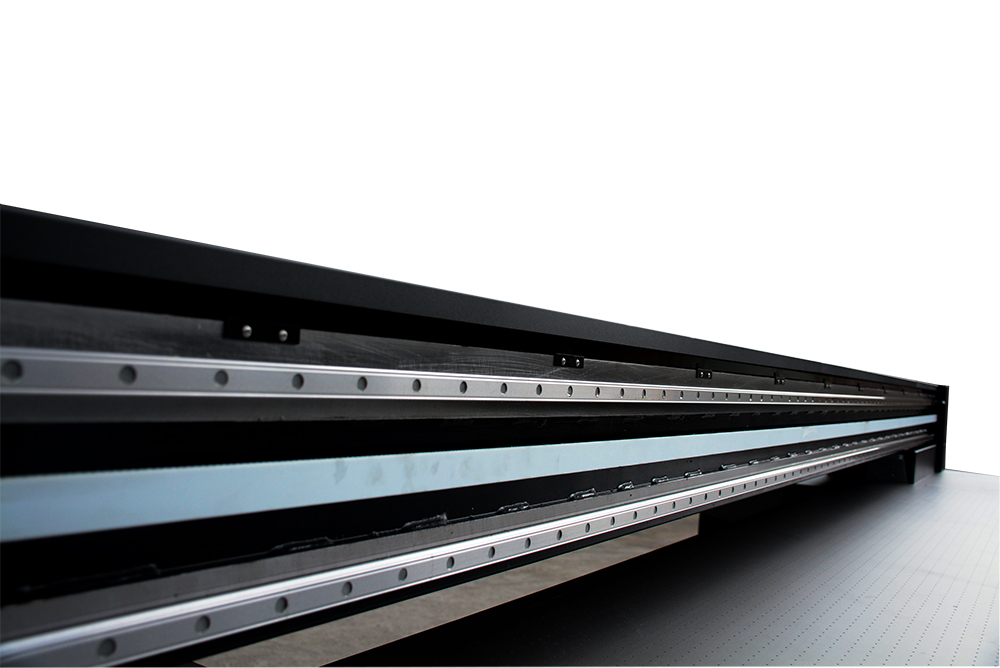UV Flatbed Printer: An Introduction to its Technology
UV Flatbed Printer: An Introduction to its Technology
In the realm of digital printing, UV flatbed printers have emerged as a game-changing technology, revolutionizing the way images and designs are printed onto various surfaces. This article delves into the intricacies of UV flatbed printer technology, exploring its working principles, applications, advantages, and considerations for users.

Understanding UV Flatbed Printers
UV flatbed printers are a type of digital printing machinery that utilizes ultraviolet (UV) light to cure or dry ink instantly after it is applied to a substrate. This technology allows for the printing of high-quality images and graphics onto flat or slightly curved surfaces, making it versatile for a wide range of materials including glass, metal, plastic, wood, ceramic, and more.
The core of a UV flatbed printer lies in its ability to deposit ink precisely onto the surface using a print head that moves across the material. The ink, specially formulated for UV curing, is then exposed to UV light, which initiates a chemical reaction that solidifies the ink instantly. This process not only speeds up production but also ensures durability and resistance to fading, scratching, and environmental factors.
Working Principles
Ink Deposition: UV flatbed printers use piezoelectric or thermal drop-on-demand technology to deposit ink droplets onto the substrate. This process allows for high-resolution printing, with some models achieving resolutions up to 600 dpi or even higher.
UV Curing: Once the ink is deposited, it is immediately exposed to UV light. This light source, typically LED or mercury-based, triggers a photochemical reaction in the ink, causing it to cure or harden within seconds. The result is a dry, smudge-free print that is ready for immediate handling or further processing.
Versatile Substrate Compatibility: The ability to print on various materials is a key advantage of UV flatbed printers. Whether it’s rigid or flexible, porous or non-porous, these printers can adapt to different surfaces without requiring special pretreatment or coatings.
Applications of UV Flatbed Printers
UV flatbed printers find applications in a diverse array of industries, thanks to their versatility and the quality of prints they produce. Some notable applications include:
Signage and Graphics: Producing high-quality signs, posters, and banners for both indoor and outdoor use.
Packaging: Printing directly onto packaging materials such as boxes, cans, and bottles, allowing for customized and eye-catching designs.
Decorative Printing: Enhancing the aesthetic appeal of products by printing designs onto furniture, tiles, and other decorative items.
Prototyping and Manufacturing: Quickly producing prototypes or small-batch production items with intricate designs and precise details.
Artistic and Personalized Items: Enabling the creation of unique, personalized gifts, artwork, and promotional materials.
Advantages of UV Flatbed Printers
Instant Drying: UV curing ensures that prints are dry and ready for handling immediately after printing, reducing production time.
Durability: UV-cured inks are highly resistant to fading, scratching, and chemicals, ensuring long-lasting prints.
Environmental Friendliness: UV printing is a more eco-friendly option compared to traditional solvent-based inks, as it emits fewer volatile organic compounds (VOCs).
Versatility: The ability to print on a wide range of materials and in various thicknesses makes UV flatbed printers highly adaptable.
High Resolution and Color Accuracy: Achieving fine details and vibrant colors, making them suitable for high-end graphic applications.
Considerations for Users
While UV flatbed printers offer numerous benefits, there are several considerations for users to keep in mind:
Initial Investment: The cost of acquiring a UV flatbed printer can be significantly higher than traditional printers due to the advanced technology involved.
Operating Costs: UV inks and the energy required for the UV curing process can contribute to higher operational expenses.
Safety Measures: UV light exposure requires proper safety protocols to protect operators from potential health risks.
Maintenance: Regular maintenance is crucial to ensure optimal print quality and the longevity of the printer. This includes cleaning the print head, checking ink levels, and calibrating the machine.
Training: Operators need to be trained on the specific features and operation of UV flatbed printers to achieve the best results.
Conclusion
UV flatbed printers have transformed the printing industry by offering a versatile, efficient, and high-quality solution for printing on various surfaces. Their ability to cure ink instantly, produce durable prints, and accommodate a wide range of materials makes them a valuable tool for businesses across different sectors. While the initial investment and operating costs may be higher, the benefits of UV flatbed printing technology, including enhanced productivity, print quality, and environmental sustainability, make it a worthwhile consideration for those seeking to elevate their printing capabilities. As technology continues to advance, UV flatbed printers are poised to play an even more significant role in shaping the future of digital printing.
